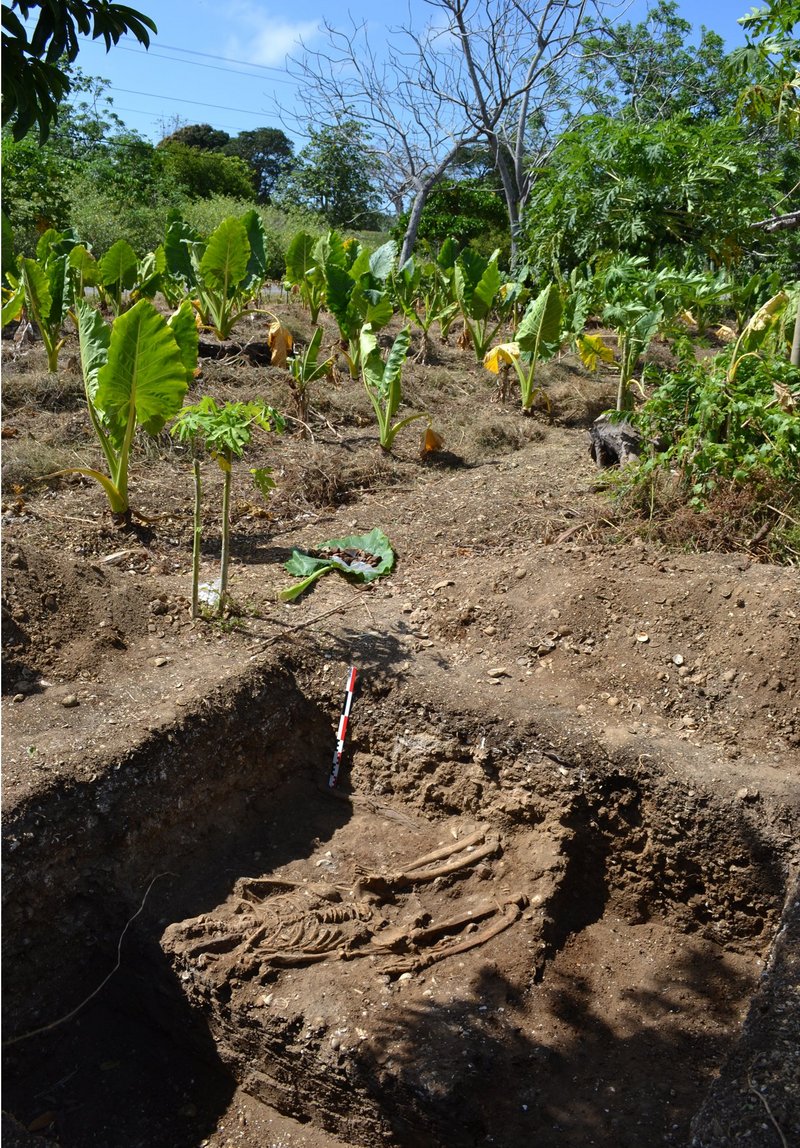Research
Projektziele
Specifically, the project has three key aims:
1. Establish the first biological profile of an early Polynesian group. Our first exploration of the assemblage indicates high
potential for further detailed analysis of aDNA, morphology, health, trauma and lifestyle, from skeletal reconstruction and identification of pathological conditions. We will conduct a detailed bioarchaeological study of the Talasiu people to establish how they lived, what they ate and whether they experienced poor health and a high rate of disease6. Additional aDNA sequences to further examine genetic origins will be obtained from Talasiu individuals to examine genetic variation and origins. Results will be used to establish the first biological profile of an early Polynesian group based on genetic, morphological and palaeopathology results.
2. Examine the critical role that sea-level fall had on Ancestral Polynesian Society subsistence and settlement using high-resolution mapping of archaeological sites and preserved palaeo-sea-level markers.
Archaeological survey along the northern palaeoshoreline of the Fanga ‘Uta Lagoon has documented a high-density ribbon of shell midden sites containing pottery of the colonising Lapita culture (2850-2650 yr BP) and derived Polynesian Plainware (2650-2350 yr BP). Chronological studies show that pottery manufacture and the deposition of large shell middens on Tongatapu ceased around 2350 years ago. Evidence that large shell midden sites declined due to a reduction in marine foods caused by sea level fall is suggested by their elevated position relative to relative mean sea level (RMSL), elevated wave-cut tidal notches on the south Tongatapu coast, presence in early sites of shell and coral species that prefer ocean saline conditions that no longer exist in the environment, and the current state of the semi-enclosed lagoon which is brackish with a mean lagoon water residence time of 23 days.
3. Determine the nature of Ancestral Polynesian Society by comparing archaeological data from three sites.
Identify the type of occupation by comparing material culture suites from Talasiu with those from Moisa and Fakala'a. Previous work indicates that Talasiu has a rich material culture assemblage including exotic lithics, ceramics and shell ornaments in addition to group burials which are consistent with permanent occupation. The question is do other sites hold the same kinds of material culture and burials or not?
Exotic stone artefacts excavated from the three research sites are geochemically analysed to determine whether APS communities were mobile and in contact with one another or isolated which would challenge the concept of a West Polynesian homeland and a unified Ancestral Polynesian Society.
Finally, Stilt houses located in the inter-tidal zone are found in West Pacific Lapita sites are hypothesised for Tonga, but no APS dwelling has ever been identified. We will investigate the inter-tidal area in front of the Talasiu site which has well-preserved lagoon sediments that have been sealed by prehistoric land reclamation for evidence of stilt house occupation (e.g. preserved wooden posts, large ceramic fragments, well-preserved midden at, or below, current sea level).





